| |
"I wonder how Seconds must have been seen by everyday audiences in 1966… Simply spending the first half hour of a 'Rock Hudson movie' with blacklisted TV character actor John Randolph as the lead character (as Arthur Hamilton, who transforms into Hudson's Wilson) doing his very best to perform quiet, slowly devastating despair, must have at least made audiences wonder, 'Am I in the wrong theatre?'" |
|
Landon Palmer, filmschoolrejects.com * |
Seconds dares you to dig in hard to appreciate it. It hurls discomfort and disconnection at you, the very last emotions coffer-sensitive studios would want to encourage. Flying in the face of almost all pre-1969 conventional Hollywood wisdom, this taut, psychological thriller breaks many rules, invents a few new ones and with hand on heart, for me, it's one of the best cinematic examples of how to execute paranoia on screen. The opening thirty minutes are shot in such a way, you can almost feel yourself lowered into the ground, hearing the dirt being shovelled in on top of you. Oppressive doesn't begin to cover it even if the dirt soon will. The only modern equivalent I can come up with where you're off your guard and nervous from the very start is the opening of Cronenberg's A History of Violence. But here is not a man contemplating the casual murder of a child. It is a lost soul whose life has run its course, congealed and then cemented into a marriage and lifestyle that has long since lost not only its lustre but its own need to continue. If suicide is always on the table, (in most respects it usually is) then Seconds nudges us into the fantastic (in the true sense of bizarre), the only just science-fiction conceit of total life transplant where the individual-that-was is physically changed beyond recognition and is free to reinvent his past self into a new life. He becomes a 'second' with all the pitfalls and freedoms that this metamorphosis might entail.
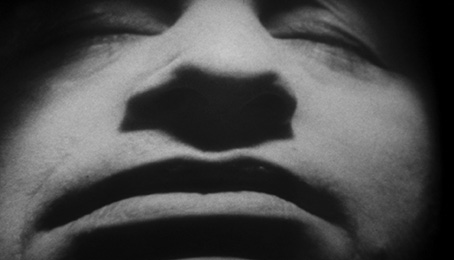
The mood is set from the very start. Saul Bass, the graphic designer whose front title work has graced a good many classics, gives us wide angle close ups of a face in painful change as skin and sinew optically stretch and distort (achieved with a pliable mirror, so I've read). Ears resemble twisted mouths as eventually we start getting frames of reference to discern a human face. Jerry Goldsmith's haunting orchestration, including a mournful and doom laden pipe organ, underlines many of the film's sub textual aspects and it's a small miracle that so many can be presented almost simultaneously. It's very disconcerting to have so many emotions striking you at once and some are even contradictory. At one moment, you feel sorry for the wife Arthur is unresponsive towards and then there follows a mostly depth-of-field challenged series of close ups of her showing affection and support. No sooner does that empathy drain away, it staples ambivalence in its place. No affectionate close up of a kissing couple has ever been presented as an example of detachment and despair as much as this one. Film is such an astounding artistic medium that it only takes the smallest look that can be interpreted negatively and that's a character judged, packed and folded away (until the next moment when we might fall in love with them again or at all). Most movies struggle to maintain their characters' likeability and sympathy throughout their running time. Seconds revels lustily in the exhibition of anguish, distress and confusion, as if these are the crumbs in the woods that will lead you to redemption. It's extraordinary to me that despite the piling up of what may be regarded as negative emotions elicited from the characters and narrative, you're still utterly glued. Frankenheimer literally as well as figuratively shoots negative with real assurance.
Arthur (John Randolph) is a man in crisis. On his way home from work boarding a train at Grand Central Station, New York, he is followed by a mysterious figure who slips him a small piece of paper. This whole scene has to be one of the very first uses of bolting a camera to the performer giving the effect that he is absolutely still while the world moves in chaos around him. It is as good a metaphor of mental illness as we can visually represent. It's used in a later party scene and is surprisingly effective in skewing the viewer's literal view and emotional perspective. Of course, to the sufferer, the world is the problem not the afflicted's own mind. It's clear from performance, direction and crucially editing, that here is a man in no small turmoil. There are few words of explanation. They simply are not needed. How much do you need to know about a man who stares vacantly out of a train window (the countryside flashes past forward and backward in repeated edits). Where's he been? Where is he going? This is artful and expressive filmmaking. He gets home to his wife, their disconnection palpable, where he receives phone calls from a man long since believed dead. Given instructions, Arthur is encouraged to visit a place that may offer a way out of his moribund and fraught existence.
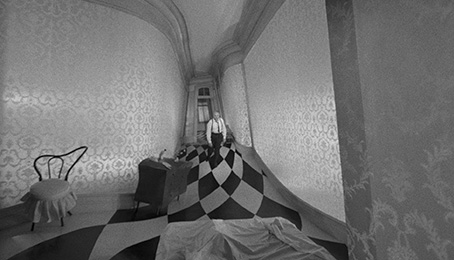
At the address, he finds a dry cleaning set up, steam hissing, human indifference marked. His advances are initially rebuffed. Interesting that the first port of call is a place that deals with appearances, clothes maketh man et al. It's even more interesting that the place he's directed to where the real business of life-changing hides is at a meat processing plant. Pig carcasses are pulled to and fro, some dressed in muslin, a wonderful and intelligent comment on the absolute futility of change. Arthur is metaphorically invited to imagine his own faked demise among scores of examples of the real thing. Once he gets to the clandestine organization, a simple cup of tea leads to a scene of almost Dr. Caligari surreality, a scene that seals the direction and manner of his fate. Arthur is about to be surgically altered to become Wilson, played by the leading man of his era, Rock Hudson.
Hudson, you must understand, was in his day a giant of Hollywood vacuity. Despite his fame, he starred in fairly safe fare, milking his chiselled good looks and massive frame without often taking chances. His charm and manliness were never questioned on screen (the fact the actor was gay and was the first high profile casualty of AIDS meant that his screen persona took as big a hit as it was possible to bear). But the irony of his casting is not lost. He was then the man other men wanted to be, the Tyler Durden of the end of the declining 50s gloss, the promise and crash of the American dream. Casting Hudson was a stroke of genius but at the time of course, the choice was seen as a mistake. It was like expecting Orson Welles to play a twelve-year-old girl. It matters little how talented you are. There are just some roles you cannot pull off. I submit that in Seconds not only did Hudson rebel against his straitjacket (perfectly named, that garment, in this case) of anodyne and emasculated roles, he excelled playing a man given a second chance and loosening up into the elaborate theatre provided by his money and a cast willing to let him play the part. If life is anything at all, it's the realisation that it's not to last. Even a restart does little to dampen that chilling thought.
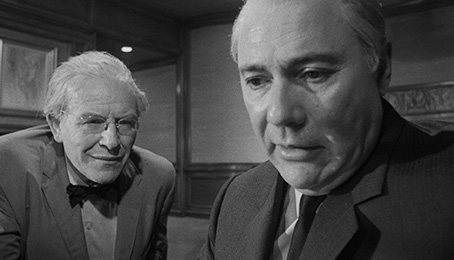
Post-operation, it's nice to see Richard Anderson giving 'Wilson' the once over, all bandaged and unable to speak. The actor performed the same calming detail for a certain ex-astronaut Steve Austin. Perhaps Wilson's not better, stronger, faster but he's significantly taller. We can gloss over this inconsistency but Hudson is six foot five and John Randolph is nowhere near that tall. Once Wilson is introduced into the society that is now his second life, it doesn't take long for the company to set up him inside a life for which he only expressed any enthusiasm while he was drugged to the eyeballs. Based on such a shaky foundation, there are no guarantees Wilson's psyche can handle the pressure. To say more would rob the film of its significant moments so I'll keep quiet on the narrative line from Hudson's first appearance.
Apart from Hudson's effective turn, great credit has to go to John Randolph whose Arthur is so hopelessly afflicted at the start of the film. His paranoia and fear dominate the proceedings in the first half hour and he is never less than utterly convincing. Once he realises that the company have him by the gonads, he deflates into submission. It's fair to say (and it has been said by Hudson's detractors) that the movie loses steam and momentum as soon as Hudson is revealed. I can understand the criticism but a gear change was necessary in order to lead us carefully and inexorably towards the conclusion. Hudson's girlfriend at his new beach house, Nora, is played winningly by Salome Jens. She is both ingratiating and controlling and that's quite a trick. It was also a nice surprise seeing Murray Hamilton as one of the company's failures and the character that suggests Arthur's change in the first place. He's so locked and loaded as the Mayor in Jaws, it's always a nice surprise to see him outside Amity. Will Geer (the grandfather in The Waltons) pops up as the reasonable voice, the founder of the company who persuades Arthur to go through with the surgery.
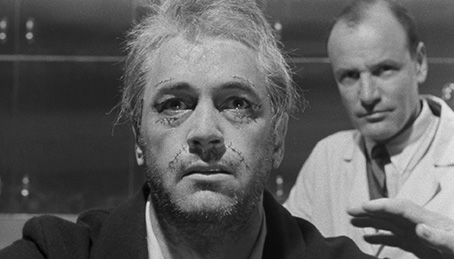
The camera work and editing calm down once Hudson's front and centre but the Bacchanalian grape-pressing revelry is a wonderful example of how to get an uptight square (that's probably what was said of Hudson's character in 1966) to chill out. All kudos to the performers who committed to this scene so completely and by that I mean nakedness is always a difficult aspect to portray naturally on screen and never once did I feel any awkwardness on behalf of the cast. Frankenheimer's direction throughout is so artful, so assured and so original, I don't think he brought this much craft and artistry to any other projects I recall seeing from him and that's coming from the perspective of someone who just adored The Manchurian Candidate. It's just this particular story cries out for a rich cinematic interpretation and Frankenheimer does it proud. The crisp black and white photography of his cinematographer, James Wong Howe is justly celebrated with deep focus choices contrasting sharply with eerie wide angled close ups and shallow depths of field. Frankenheimer's editor, Ferris Webster is also working at the top of his game matching his director's creative industry with lovely touches of his own. I have mentioned Jerry Goldsmith's work but I'd like to underline not only his musical prowess (this was only his twenty fifth movie of two hundred and fifty-eight composer credits) but his impeccable dramatic sense. Music is sparingly used throughout and at every time, it's eerily effective. This reminds me so much of why a composer, like an editor, is a storyteller and knowing when not to score (and when not to cut) are just as important creative decisions as knowing when to do so.
Seconds, like John Boorman's Zardoz, was summed up thusly by its director; a movie that went from failure to classic without ever becoming a success. I'm just pleased that we have channels and media that allow us to take (excuse me) a second look at movies that really were made and distributed way before their time. The cinema of the paranoia doesn't get much more twisted than Seconds and that ending…
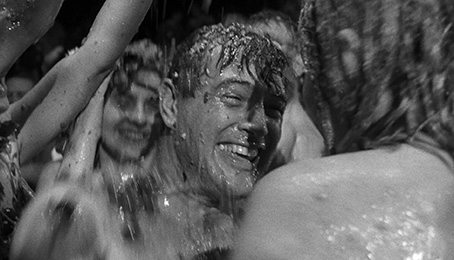
It should be noted that this is Frankenheimer's original cut, first made available to the general public on the film's 1996 laserdisc release. The principle difference between this and the film's domestic cinema release is the beatnik wine pressing scene, which for the cinema version was recut to remove several instances of nudity which have all been restored here. Somewhat ironically, this excision of a number of key shots transformed what was intended to be a free-spirited expression of joy look like an orgy.
A film as visually striking and inventive as Seconds deserves the very best HD transfers and that's just what it gets on the Blu-ray in this Masters of Cinema dual format release. Framed in the aspect ratio of 1.75:1 (on the commentary Frankenheimer claims the film was shot 1.66:1, but the framing never looks uncomfortable here), the image quality is top notch throughout, boasting a gorgeously pitched contrast and tonal range, crisp detail that really shines on facial close-ups and deep focus wides, and not a sign of dust spots, scratches or other damage. This easily matches the standard-setting quality of the transfer on Criterion's US release and was likely sourced from the same master.
The Linear PCM mono 1.0 is also in great shape, being clear, clean of damage, free of any hint of distortion and displaying no background hiss, which is especially welcome on a soundtrack that makes such good use of silence. The bass response on the music in the opening credits is impressive for a film of this vintage.
John Frankenheimer commentary
Recorded in 1996 for the aforementioned laserdisc release (and also included on the Criterion Blu-ray and Paramount's previous region 1 DVD), this is another wonderful commentary from a director who clearly revelled at the opportunity to talk about his work (check out his equally fine commentary track on the Arrow release of The Manchurian Candidate) and is loaded with fascinating stories about the making of the film. A great example comes early when we learn that he was able to shoot in Grand Central Station without attracting public attention because he set up a fake camera nearby and had an actor and a Playboy Bunny stage a love scene in front of it, which effectively distracted onlookers whilst the real filmmakers shot their scene. He praises the work of editor David Newhouse and especially cinematographer James Wong Howe, with whom he worked closely and whose contribution to the film he describes as substantial. We learn about the locations – the house in which the transformed Wilson is installed was Frankenheimer's own, and 'Honest Arnie, The Used Cow Dealer' was a real meat packing plant whose interior nearly put the director off meat for life – and get some specifics on the wide angle lenses used (at one point he tells us which lens is on the camera on a shot-by-shot basis). There's considerable detail on his actors, a number of whom were previously blacklisted, and I was certainly unaware that for the party scene in which Wilson gets drunk and makes a fool of himself, Hudson actually was drunk, an idea proposed by Frankenheimer that Hudson agreed to go along with. There are so many good stories here and so much information on the making of the film that it really is worth buying this disc for the commentary alone. I'll leave the rest for Frankenheimer himself, save for this telling quote about the film's poor box-office performance: "Those who wanted to see a Rock Hudson picture didn't want to see Rock Hudson in this part and those who wanted to see this kind of a movie didn't want to see a movie with Rock Hudson in it. That leaves an audience of about five or six. This was literally a movie where you could call up the theatre owner and say 'What time does Seconds go on?' and the guy would say 'Well what time can you get here?' It was a terrible failure when it came out and yet now it's considered this kind of great cult picture."
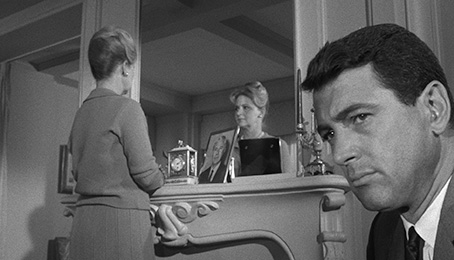
Adrian Martin commentary
Australian film scholar Adrian Martin is as insightful and interesting here as he was on the Masters of Cinema disc of Douglas Sirk's The Tarnished Angels, which also starred Rock Hudson. Although there is some factual info on the making of the film (much of which – though not all – is covered in more detail by Frankenheimer above), the meat of this commentary involves Martin exploring the film's themes and subtextual elements, often compellingly and by referencing other relevant works and reviews. There's some interesting analysis of Frankenheimer's career and filmmaking style, of the (possibly unintentional) coded references to Hudson's homosexuality and how he likely drew on this for his portrayal of a man uncomfortable in his own skin, and some intriguing discussion on the deconstruction and reconstruction of the human face and body. There's barely a pause here and it's all worth hearing. Good stuff.
Kim Newman on Seconds (20:02)
Even when discussing films he admires, there can sometimes be a cynically humorous edge to the venerable Mr. Newman's verbal delivery, but that's just not present here. Seconds is clearly a film he holds in the highest regard, and I was with him all the way when he states that for him the final scene is among the most horrifying moments in cinema and one that contains the most upsetting sound effect he's ever heard in a film. That should whet your appetite. He pertinently suggests that Hudson was underrated as an actor because he was so handsome and salutes this as his best performance (with you there). He also states of this disc "the fact that you bought this proves you have distinctive and disturbing taste." Wear that badge with pride.
Trailer (2:11)
"Who are Seconds? Where are Seconds? Seconds might be all around you! EVEN NOW!" The trailer pushes the film's bold and bizarre elements and hedges its bets by informing us that this is "an astonishing change of pace" for Hudson.
Booklet
There are two essays on the film here, Seconds by Mike Sutton and the longer The Hollow Men by David Cairns. Both are smartly observed companions to the film, and Cairns supports comments made by Kim Newman by stating that in the film's final scene Hudson gives the performance of his life. Credits, stills and the usual notes on viewing are also present.
Seconds is a film I was itching to review myself from the moment this disc was announced, but was forced to pass the task on to an equally eager Camus due to being tied up with the London Film Festival and having to put some hellish hours in on my day job. It's a film I absolutely adore and if I ever get a quiet few days I may well write a piece anyway – the are so many things worthy of discussion here and it remains my favourite John Frankenheimer film and my favourite Rock Hudson performance. For now I can only second (ha ha) the words of my esteemed colleague above and state that this extraordinary and visionary film looks terrific here, is backed by some excellent extras and comes very highly recommended.
* http://filmschoolrejects.com/features/seconds-john-frankenheimers-forgotten-60s-masterpiece.php#BmrLOB1B6kWlaeRU.99
|